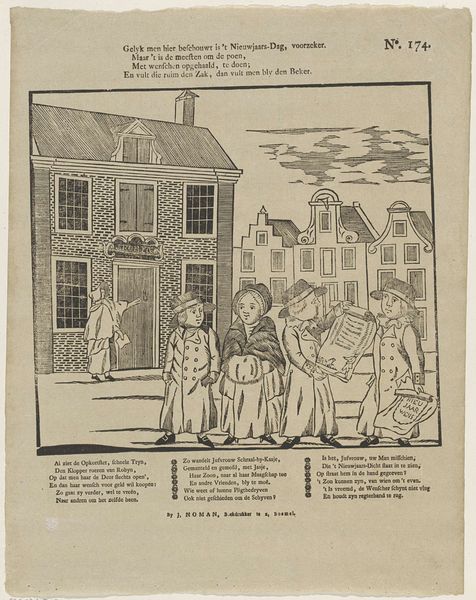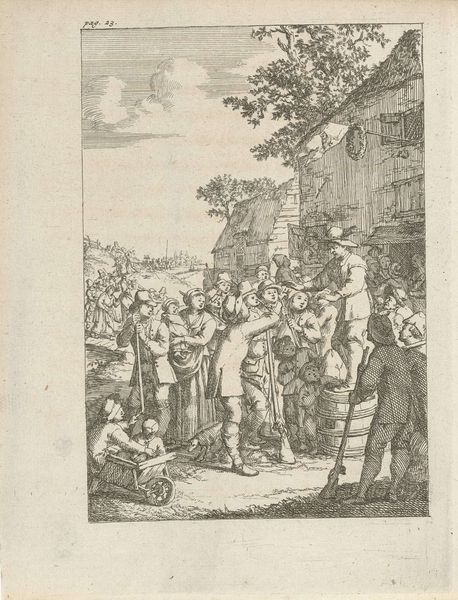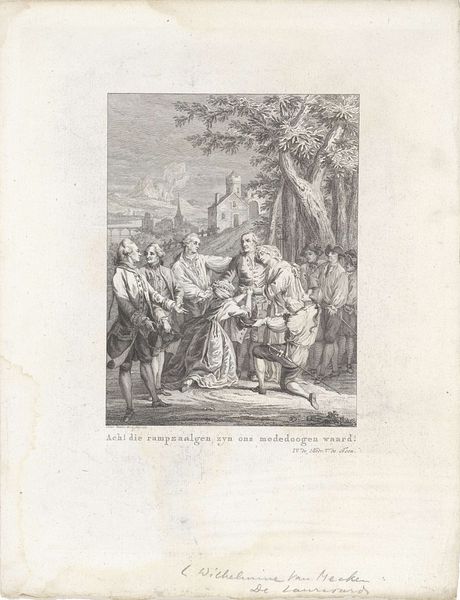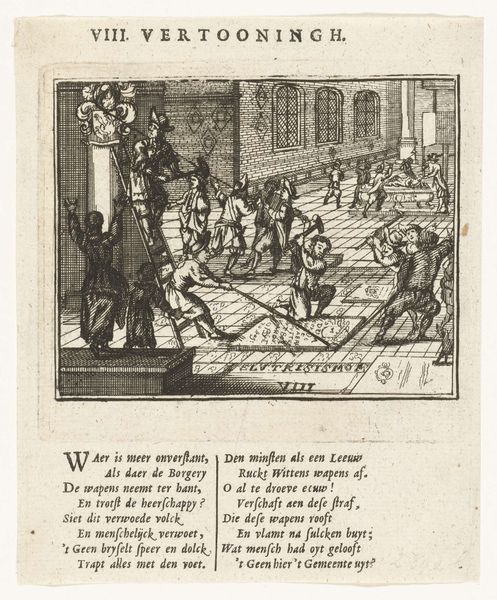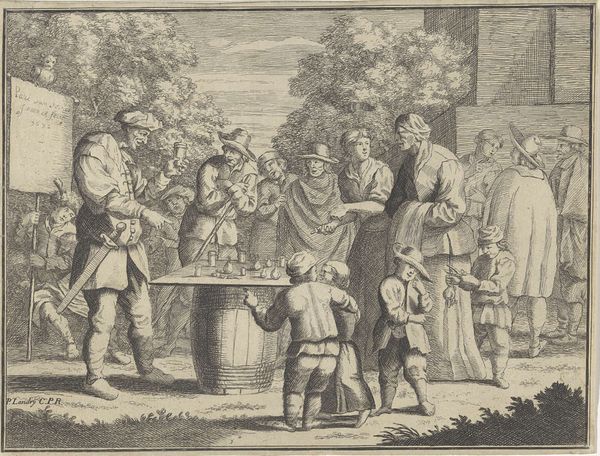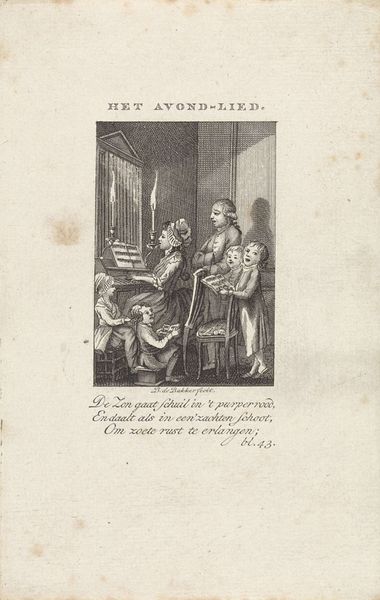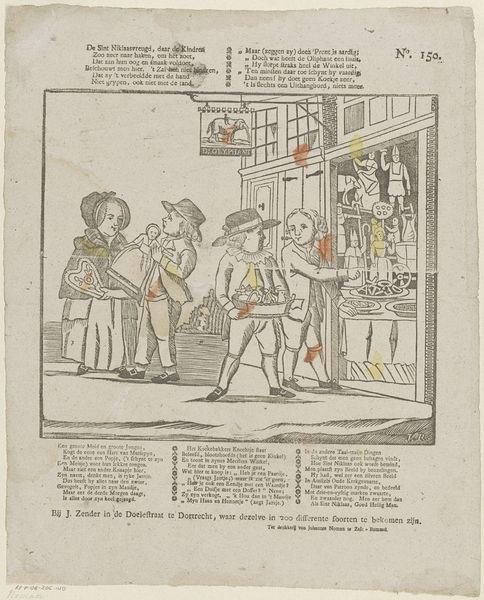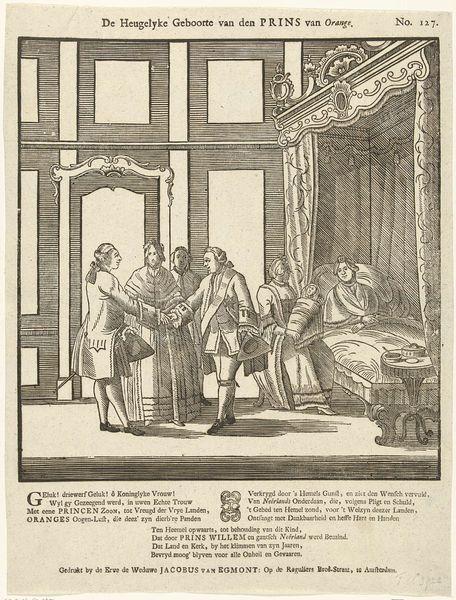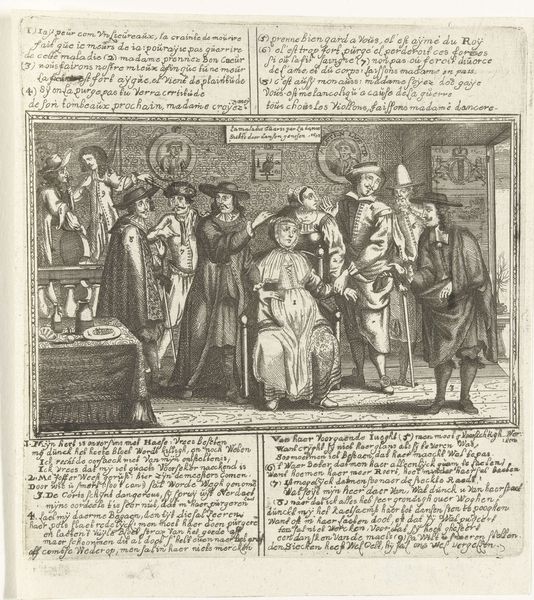!['T is Paasch-feest, dat is ligt te merken, / Daar Jannetje de koopvrouw zeit [(...)] by J. Robyn](/_next/image?url=https%3A%2F%2Fd2w8kbdekdi1gv.cloudfront.net%2FeyJidWNrZXQiOiAiYXJ0ZXJhLWltYWdlcy1idWNrZXQiLCAia2V5IjogImFydHdvcmtzLzBmYjU1NzVhLWM2NWEtNDIzZC04ZTI0LTBkYmM2MmIzMmRiMC8wZmI1NTc1YS1jNjVhLTQyM2QtOGUyNC0wZGJjNjJiMzJkYjBfZnVsbC5qcGciLCAiZWRpdHMiOiB7InJlc2l6ZSI6IHsid2lkdGgiOiAxOTIwLCAiaGVpZ2h0IjogMTkyMCwgImZpdCI6ICJpbnNpZGUifX19&w=3840&q=75)
'T is Paasch-feest, dat is ligt te merken, / Daar Jannetje de koopvrouw zeit [(...)] 1715 - 1813
0:00
0:00
print, engraving
#
narrative-art
#
dutch-golden-age
# print
#
old engraving style
#
figuration
#
genre-painting
#
engraving
Dimensions: height 410 mm, width 310 mm
Copyright: Rijks Museum: Open Domain
This print, made in Amsterdam, probably in the 1700s, shows children celebrating Paasch-feest, or Easter. But rather than focus on the religious aspects of Easter, it's more interested in how the holiday is commercialized and consumed. The image creates meaning through its depiction of social customs and commercial exchange. We see children admiring and reaching for the ‘Palm-Paasch,’ a decorated tree with sweets and treats, prepared by Jannetje the shopkeeper. The verses beneath the image talk about buying a small palm for a daughter, and the joy a child feels when given treats. This commercialization of religious holidays reflects Amsterdam's culture as a center of trade and commerce, where even religious festivals became opportunities for economic activity. The print seems to promote these kinds of exchanges. To fully understand this print, a social historian would research the history of Easter celebrations in Amsterdam and the role of merchants in shaping cultural traditions. We can consider the meaning of art as contingent on social and institutional contexts.
Comments
No comments
Be the first to comment and join the conversation on the ultimate creative platform.



